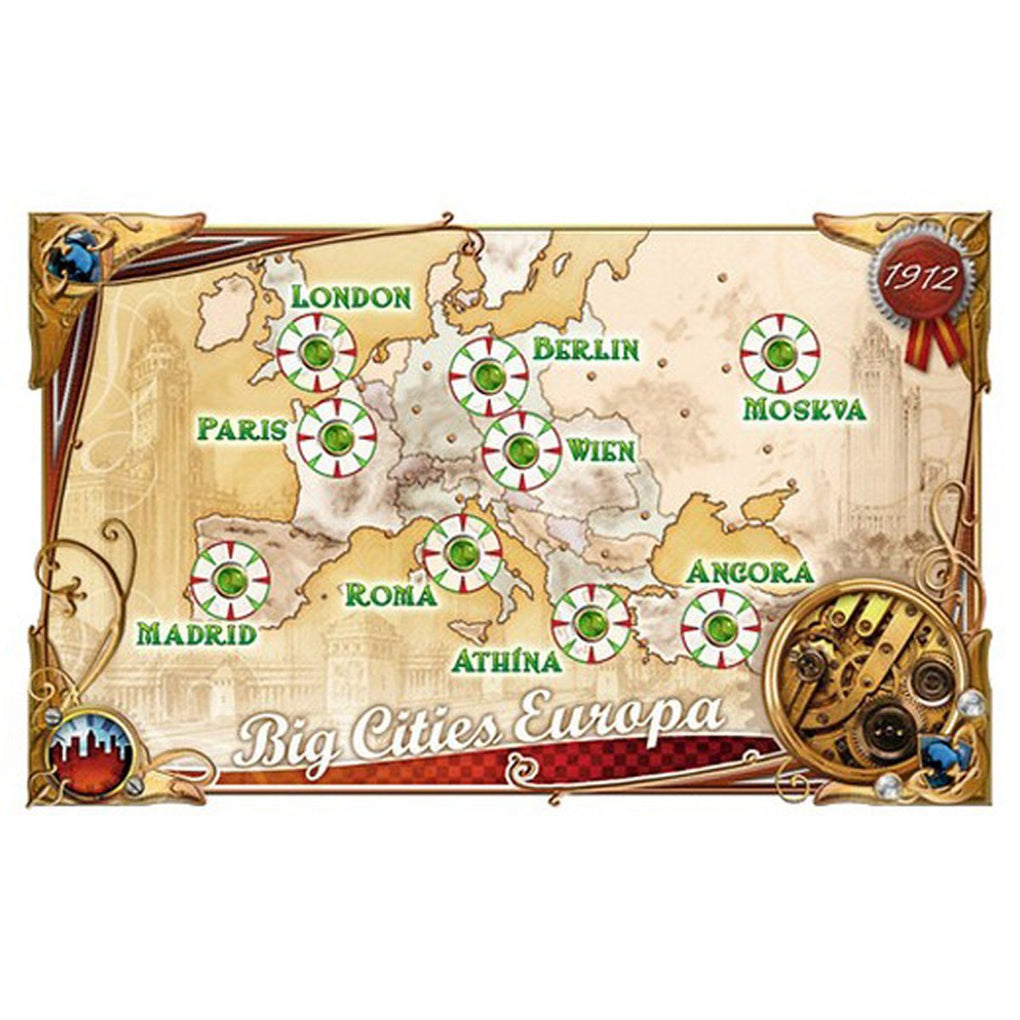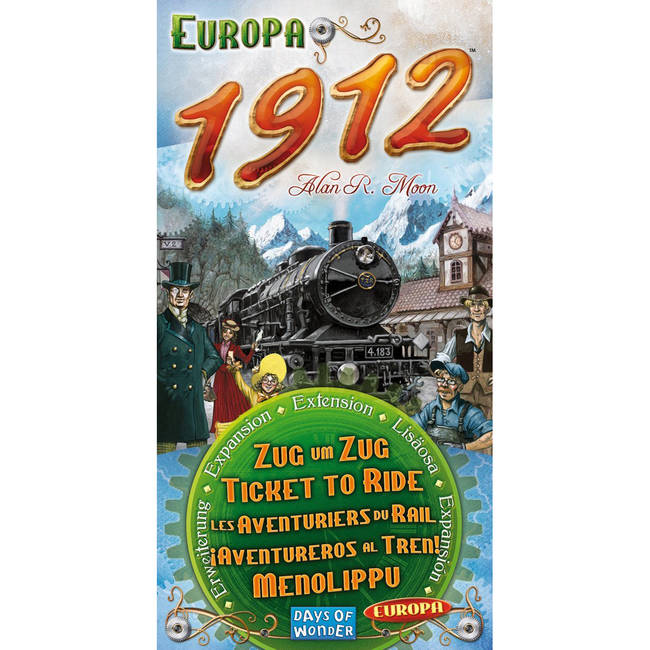

It just exaggerates the worst element of the Ticket to Ride series too much for me to use it moving forward. The biggest problem with this is a game can be won on the cards earnt in this method – increasing the luck of the draw that is already prevalent in the game. Suddenly even those that hate the idea of blocking find themselves unknowingly doing it for a flurry of cards. In practise this results in accidental route blocking as players are incentivised to deviate from their destination ticket. With the chance of earning cards – and in a way taking them from another player – it becomes more common for players to grab small routes near depots. This pairing drives a new angle of interaction between players. At the end of the game the player(s) with the most depots left scores a bonus 10 points.
#Ticket to ride 1912 free#
As a free action a player may choose to place one of their spare warehouses onto an empty city on the board. Note it is from whomever owns the connected depot – regardless of if it is theirs or an opponents. If anyone claims a route to a city with a player’s depot they can discard one of their spare depots to take all the train cards from that players warehouse. Warehouse tiles simply sit in front of players.ĭuring play, whenever a player draws train cards they must first draw the top train card from the deck and add it to their warehouse tile. Players then put their remaining four nearby the board for use during play. After selecting destination tickets, in reverse player order, each player then adds one of their depots to an empty city on the board. If including warehouses and depots, during setup each player takes the warehouse and 5 wooden depots of their player colour. It isn’t just new routes, a new way to gain Train cards is also brought in via the Warehouses & Depots module. At other occasions though this sees everyone around the table attempting to get into one city and a rush to grab routes begins. This can lead to a bit of a hollow victory. If a single player draws a number of these cards they can very easily find some routes completed as part of others – giving effortless points. Players are more likely to draw routes that involve specific cities. Increasing the amount of cards is ideal to giving more variety however it does have a side effect. However, as they are only part of the destination cards in use it is easy to be thrown off by other routes players are claiming. I anticipated 12 long routes would cause players to swiftly learn and block them.

Everyone must now keep a minimum of 3 routes – including the long route if they choose one. All other destination tickets are then shuffled with 5 dealt out to each player. The unused or discarded long routes are then removed from the game. The base game included only 6 of these long routes. These are routes that score 20+ points, and players can keep up to one of these. Mega Europe sees 12 special long routes shuffled, with 2 dealt to each player. This is an interesting change as players are more aware of what cities may be connected, often seeing stations deployed. This sees players drawing from the Big Cities destination deck during setup and during the game – with 5 dealt initially and at least two kept. Big Cities changes the dynamic slightly towards, you may have guessed, the big cities of Europe. Europe Expanded doesn’t change any rules merely adding new cards to the destination deck effectively the default option for playing with the expansion.

30 cards then make up a Big Cities variant with a final all in Mega variant including all expansion cards.Īt the start of a game players choose which variant to play, shuffling in the associated expansion cards with the basic 46 cards. 19 new destination tickets make up a Europe Expanded variant. Not all of these are new though, with 46 of the cards being copies of the original destination deck. Included in Ticket to Ride Europa 1912 are over 100 destination tickets, the objective cards used in the Ticket to Ride series. However, are journeys to the Big Cities across Europe enough to make this expansion worthwhile? Let’s find out! Unlike many expansions from the series it is not a map pack, with new cards, warehouses and depots added in instead. Moon, the expansions leaves the 45 minute play time and 2 – 5 player count of the base game untouched. Ticket to Ride Europa 1912 is the 2009 small expansion for Ticket to Ride Europe – one of the franchise’s base games – from publisher Days of Wonder.


 0 kommentar(er)
0 kommentar(er)
